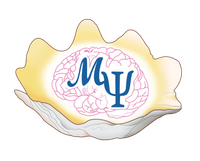Articles
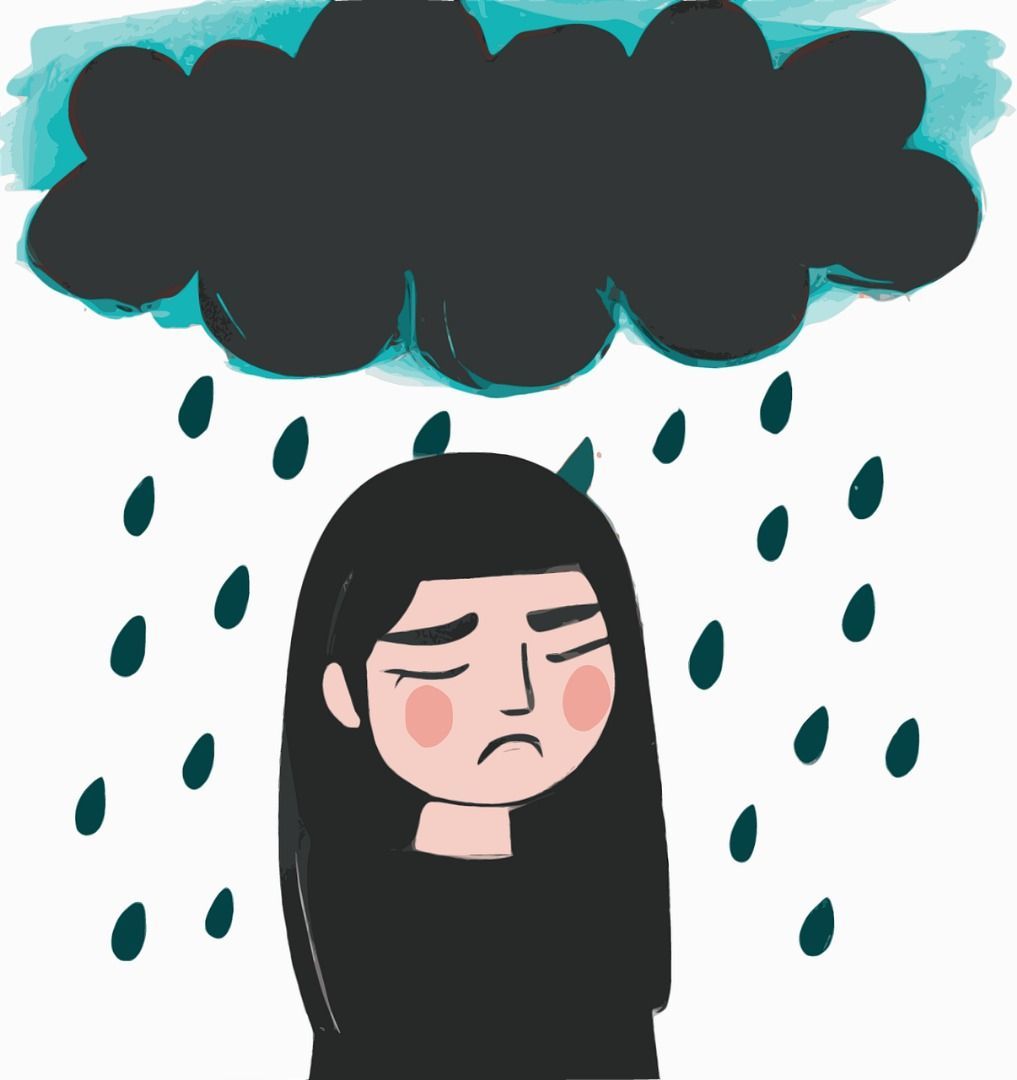
Growing up, I was an adventurous kid—curious, always eager to explore the world around me. I didn’t have to try to laugh. It came freely, like second nature. However, something changed during secondary school, though I can’t quite pinpoint an exact moment or trigger. I became more self-conscious, more withdrawn. It was as if someone had turned on a spotlight inside me, making me painfully aware of every word I spoke, every facial expression I made, every interaction I had. My mind became a constant storm of “Am I too much?” “Did I say something wrong?” “Do they think I’m weird?” This shift didn’t just happen in school; it was mirrored at home too. It was hard to open up to my parents. While I know they love me in their own way, emotions were never something we talked about. Raised in a culture where emotional expression isn’t something openly taught or talked about, my parents often struggled to respond to feelings with much sensitivity or understanding. The family dynamics were also tense, not always visibly, but you could feel the tension. As an only child, I had no one else to confide in. Over time, I learned to tiptoe around my own emotions. I didn’t want to burden others, and I certainly didn’t want to be misunderstood. So I stopped trying. Somehow, sadness became familiar. It started to feel like a warm blanket—a space where I didn’t have to pretend, didn’t have to explain myself. It was predictable. Unlike happiness, which made me nervous. It felt unstable, like holding something too fragile. If I allowed myself to be happy, it would eventually be gone anyway. I didn’t trust it would stay. I knew it was unhealthy. I knew I was stuck. But it wasn’t something I could just snap out of. I tried therapy. I tried medication. Both helped in some ways, but neither completely erased the heaviness I carried. It was persistent. Invisible to others, but deeply felt within me. Studying psychology became a turning point. I wasn’t just drawn to the subject out of academic interest, I was actually searching for answers. During one of my courses, I came across the concept of learned helplessness, a theory developed by psychologist Martin Seligman. It described how, after repeated exposure to uncontrollable stress or failure, animals and people may stop trying altogether, even when the circumstances change. I also remember reading about an experiment named “Fleas in a Jar”. Normally, fleas can jump up to 30cm high. However, in this study, scientists placed them in a jar with a lid that was just 10cm tall. At first, the fleas kept trying, they hit the lid over and over again. But after a few days, they gave up. They stopped jumping past the 10cm mark, even when the lid was removed. Even when freedom was right there, they didn’t try anymore. I saw myself in those fleas. After years of failed attempts to be understood, to express myself without fear or shame, I began to believe that trying was pointless. I would just say, “This is just how I am.” But what if it’s not who you are, just who you’ve become? What if we’re just jumping 10cm high, not realising the lid is already gone? There is one more layer to all this—something I continue to unlearn. I carry guilt for expressing my emotions. Even now, when I open up to someone, I replay the conversation repeatedly, wondering if I overshared or made them uncomfortable. Shame has a way of lingering, even when we logically know we did nothing wrong. But here’s the thing I’m slowly learning: sadness doesn’t have to be a home, just a resting place. And feeling deeply isn’t a weakness—it’s proof that you’re alive. Maybe healing isn’t about running away from sadness, but about learning to sit beside it... without letting it consume you. Sadness built me a shelter. But I’m learning how to open the windows—little by little. It’s not something I’ll unlearn overnight. It’s a lifelong journey, and I’m learning to be okay with that. I’m excited to see where this takes me. The fearless child I once was may not be gone forever. She may just be waiting patiently for permission to feel safe again.
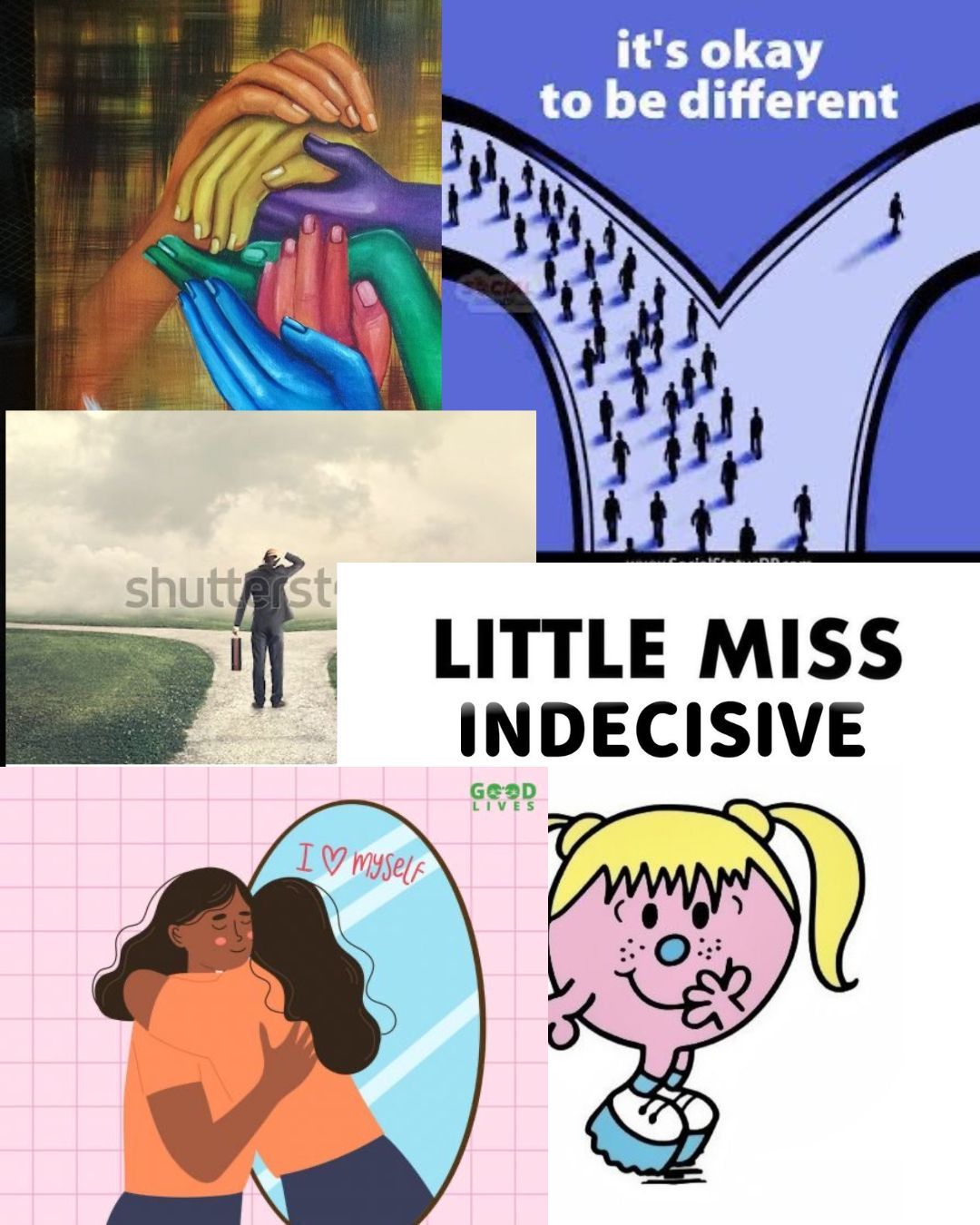
Being a teenager isn’t easy. You're stuck trying to figure out who you are while constantly sizing yourself up against your friends, those influencers you see online, or even random people you come across. But what I didn’t get back then was that the hardest critic of all wasn’t anyone else—it was me. The day it finally hit me how tough I was being on myself changed everything. For the longest time, I didn’t really think much about how I viewed myself; just kind of assumed this is the way everyone feels — awkward, unsure, and constantly second-guessing all the time. Then it finally hit me like a ton of bricks one day: this was not just normal, customary self-doubting at the age of a teenager. I was my own critic. I did not need an enemy because I was doing a good enough job on myself. The Constant Pressure to Be Perfect I only really realised it in retrospect; however, it has always been there. It accompanies every decision I make with an internal commentary. Did I say the wrong thing? Am I embarrassing myself? Why did I choose this outfit? The questions were endless. I would replay my mistakes over and over in my mind, imagining every way I could have done things differently. I would watch everyone else around me, and they were together and sorted, so why couldn't I? I always believed that I must be hard on myself to improve; how else could I do so? But now, it is not even about improvement-it is just constant perfectionism. It applied to all areas-in school, with friends, and in my day-to-day life. I felt as though I was always falling short. The saddest part, of course, is that if I were imperfect, I was supposed to be worthless. The Breaking Point Thus came the breaking point with a crafting project at the national level, a project I was working on with my teammates. We were straight engaged in it for twelve days, pouring every ounce of effort for everything to go perfect. Each of us did a part, and mine was one of them, and as the day for presentation struck slowly nearer, I got it into my mind my work was the weakest. Even after spending days tweaking it, the absolute feeling of inadequacy could not be shaken off. Everyone around me, my best mates in particular, was reassuring me that this, indeed, was the best of all--so much so that they were very sure it would win the competition for us. Well, I did not believe what they said. To me, I thought they were just trying to support where they could and that the pressure to make everything perfect had gotten the better of me. I never saw myself as being able to meet the high marks I set for myself. I did not appear on the day of the presentation just because I simply could not tackle that one. I was very shocked to discover that my team had won the championship prize and credited my part as the reason for their winning it. That was the moment I realised something very profound: I had been wrong. My work had not been the worst; it was precisely what the project needed. And more amazing? I made even a bigger difference than I thought. Keeping My Expectation Low & Considering Myself A Failure And there have been moments when I didn't feel even remotely suited for anything related to success and began to settle in disappointment over self and manage lower expectations simply because it would save from the painful experience of failure. I created the philosophy of "low-emotional-involvement" because, at the core, it would mean not expecting much. Unfortunately, this thinking had a reverse effect-the feeling like a failure came first even before trying out anything. I stopped setting extremely high bars because of fear that I would miss and instead managed to convince myself that playing it small was safe. In reality, I was only subjugating myself. The thought roamed my mind that I may not be good enough for success, friendship, or anything that I wanted. That doubt in oneself spread through everything that I did. Most often, I would say: I'm just a loser. I just don't care anymore. I would call myself a failure again and again until I believed it. I didn't even try because I didn't think my efforts would make much of an impact. I had stopped believing in my inherent potential, which, I feel, was the worst feeling of all. It Took Longer Than I Expected It took me longer than I would like to admit to finally understand that I was my biggest obstacle. I was a teenager at the time, and I was trying to discover who I was and where I belonged in the world. Further complicating things, I sought validation from others as I was not secure enough about my identity. But the hardest part was not just letting go of the fear of failure — it was learning to accept myself as I was. Imperfections and all. It didn’t happen overnight. Criticism had always been equated in my mind with me growing. Now, unlearning that took years, and believing that it meant I was growing personally. Mistakes were not an indication of who I am, but of what improvements there were yet to be found in me. And then slowly, but surely, I started to shift that though process. A New Perspective: Embracing Imperfection Finally, I began concentrating less on those things that I could not do very well and instead on what I was doing successfully. I learned to celebrate all the little wins that would allow me to turn in an assignment, have a good conversation with a friend, or just keep showing up every day. I realised that mistakes were not the end of the world: they were part of the process. I also learned to ask myself: “would I treat a friend this way?” If a friend were struggling with self-doubt, I would not criticise them for it. I would remind them of all the amazing things they were doing. So, why wasn’t I doing that for myself? The Road Ahead I will not say that I've completely eliminated the criticising voice inside my head. It does still enter in my life now and then. But these days, I see it as simply something that can be understood and understood not as an inner truth. I'm learning to give myself permission to indulge in imperfection, make mistakes, and learn from them without judging myself-it really took long, longer than most people would expect. I am beginning to figure this out for myself-actually more slowly than anyone else would think. I can see myself in a gradually better light. And believe me, I know I am not on the journey alone. So, if you're reading this and think you are your own worst critic, let me tell you-you don't have to be. Be as nice to yourself as you want to acknowledge the fact that you're allowed to make mistakes, but you know you can still be great anyway. And that is something I wish I could realise as much earlier as possible.
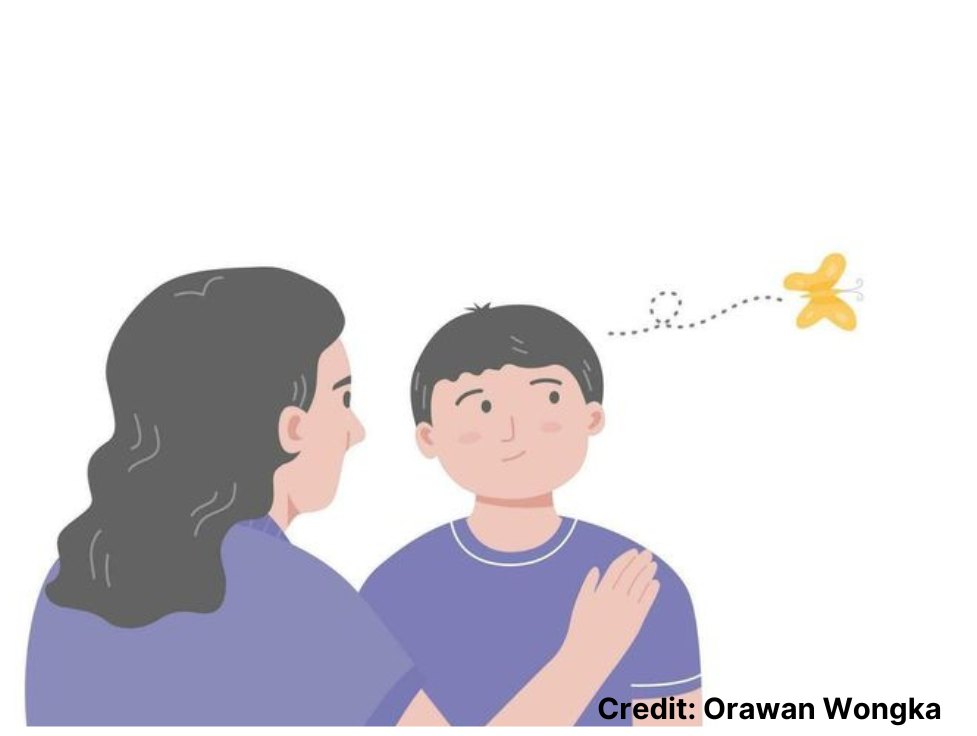
Ever find yourself daydreaming in the middle of a meeting or struggling to focus on a single task? While occasional lapses in attention and focus are common, ADHD—Attention-Deficit/Hyperactivity Disorder—is more than just a fleeting distraction. It’s a neurodevelopmental condition marked by a persistent pattern of inattention, hyperactivity, and impulsivity that significantly impairs daily functioning. Unlike the momentary distractions most people experience, ADHD involves a chronic and pervasive impact on various aspects of life, influencing how individuals manage tasks, maintain relationships, and navigate their environment. So, What’s ADHD Anyway? ADHD is a neurodevelopmental disorder characterized by persistent inattention, hyperactivity, and impulsivity. It often begins in childhood and can manifest as difficulties with focus, sitting still, and behavior regulation. In children, these symptoms frequently disrupt academic performance and social interactions. For instance, a child with ADHD might struggle to complete assignments, follow instructions, or maintain friendships, which can lead to challenges in school and at home. Early diagnosis and intervention are crucial in managing these symptoms effectively. A combination of medication, behavioral therapy, and support from family and professionals can significantly improve a child's ability to function and thrive in various aspects of life. While ADHD often begins in childhood, its effects can continue into adulthood. In adults, ADHD can impact job performance, organizational skills, and relationships. Adults with ADHD may find it challenging to manage time, stay organized, and maintain focus on tasks, which can affect their career progression and personal relationships. The persistent nature of ADHD symptoms requires ongoing management, and treatment strategies may include medication, therapy, and lifestyle adjustments. With appropriate support and interventions, adults with ADHD can learn to harness their strengths and improve their overall quality of life. Spotting the Signs: What to Look For ADHD symptoms typically fall into three main types: Inattention : often leads to frequent forgetfulness and difficulty focusing. At work, this might mean missing deadlines or having disorganized tasks. In school, it can result in problems with completing assignments and staying engaged. In personal relationships, inattention can lead to forgotten commitments and disrupted conversations as those with ADHD might struggle to stay focused on what the other person is saying. They may become easily distracted or start thinking about something else, which can make them miss important details or lose track of the conversation. This can make conversations seem disjointed and lead to misunderstandings, as they might not fully follow or remember what was discussed (American Psychiatric Association, 2013) Hyperactivity : often involves excessive fidgeting, difficulty sitting still, and a constant need to move. At work, this might lead to restlessness or an inability to stay seated for long periods, which can affect productivity and task completion. In school, hyperactivity can manifest as difficulty remaining seated during lessons or an urge to frequently get up, which can disrupt both learning and classroom dynamics. In personal relationships, hyperactivity can result in a tendency to interrupt conversations, difficulty waiting for one's turn, and a general sense of restlessness. During conversations, hyperactivity can cause issues because an individual with ADHD might have trouble staying still and focused, often appearing impatient or overly energetic. This restlessness can make it difficult for them to engage fully in a discussion, as they may struggle to remain seated or concentrate on what is being said. As a result, their constant movement and inability to stay calm can disrupt the flow of conversation and make interactions feel less coherent (American Psychiatric Association, 2013). Impulsivity : involves making hasty decisions without considering the consequences, interrupting others, and acting on immediate urges. At work, this might lead to rushing tasks without proper planning or making snap decisions that can affect the quality of work. In school, impulsivity can result in blurting out answers before questions are fully asked or difficulty waiting for one’s turn during group activities. In personal relationships, impulsivity can cause problems such as interrupting conversations, making inappropriate comments, or acting without thinking about how it might affect others. In conversations, impulsivity can disrupt interactions because an individual with ADHD might interrupt frequently or speak out of turn without waiting for their turn. This can lead to fragmented discussions and misunderstandings, as they may not fully consider the impact of their words or actions before speaking. Their tendency to act quickly on impulses can make it challenging to maintain a smooth and respectful flow in conversations (American Psychiatric Association, 2013). Understanding these symptoms and their effects on work, school, and relationships is essential for effective management and support. Understanding this distinction is crucial as we delve into the idea that ADHD, despite its challenges, can also be associated with remarkable strengths. When we refer to ADHD as a "superpower," we’re not downplaying the difficulties it presents, but rather emphasizing the unique qualities that often accompany it. According to Hoogman et al. (2020), people with ADHD frequently exhibit extraordinary creativity, a remarkable ability to think outside the box, and enhanced problem-solving skills. Their tendency for hyperfocus allows them to delve deeply into interests and projects with exceptional enthusiasm and dedication. Additionally, their ability to shift attention rapidly can foster impressive adaptability and innovation. By acknowledging these traits as superpowers, we can reframe the narrative to celebrate the distinctive advantages that ADHD can offer, turning perceived challenges into powerful assets. Who’s Affected? ADHD symptoms can affect people at any stage of life, but it is most commonly diagnosed in childhood (American Psychiatric Association, 2013). Early identification is essential as it allows for timely intervention and management tailored to developmental needs. Tailored to developmental needs means that interventions and strategies are customized based on the individual’s age, cognitive abilities, and emotional and social development. For instance, younger children may benefit from behavioral therapies that focus on building routines and social skills, while older children might need academic support and strategies to improve organizational skills and manage homework (Wolraich et al., 2019). By addressing the specific challenges associated with each developmental stage, interventions can be more effective in helping children manage ADHD symptoms and support their overall growth (National Institute of Mental Health, 2020). While boys are more frequently diagnosed, girls with ADHD may exhibit different symptoms, such as daydreaming or internalized difficulties, which can be less noticeable (Wolraich et al., 2019). According to the National Institute of Mental Health (2022), this variation in presentation can sometimes lead to underdiagnosis in females. Recognizing these diverse symptoms is crucial for accurate diagnosis and effective intervention. How ADHD Affects the Brain Key areas in the brain that are involved in the presentation of ADHD include: Prefrontal Cortex : This brain area is essential for organizing, planning, and controlling impulses. In ADHD, reduced activity in the prefrontal cortex disrupts these executive functions, making tasks like managing time and setting goals more challenging (American Psychiatric Association, 2013). Dopamine : Dopamine is a key neurotransmitter involved in the brain’s reward system and motivation. It regulates feelings of pleasure and reinforces behaviors that lead to positive outcomes. Research shows that individuals with ADHD often exhibit altered dopamine functioning, which can contribute to challenges in attention and motivation (Biederman & Faraone, 2005). Understanding dopamine's role is essential in addressing various behavioral and mental health issues. Neural Networks : ADHD affects the brain's attention and cognitive control networks, leading to abnormalities in the connectivity of the default mode network (DMN). This disruption can impair focus and increase susceptibility to distractions, as the brain struggles to transition between restful and goal-directed states. (Castellanos & Aoki, 2016) Recognizing these brain-based differences helps in developing more effective treatments and support strategies for managing ADHD such as behavioural therapy, medication, and mindfulness and relaxation techniques. Need Support? Think you or someone you know might have ADHD? Seeking help from a healthcare professional is a crucial first step. With appropriate strategies and interventions, ADHD can be managed effectively, turning potential challenges into opportunities for growth. To start, consult with a mental healthcare provider, such as a psychologist, or psychiatrist, who can guide you through the process of diagnosis and treatment. At Mentem, we offer a comprehensive range of services for individuals navigating ADHD, starting with a diagnostic interview conducted by our clinical psychologist. Following this, we provide screening and assessment tools to evaluate ADHD symptoms and any co-occurring conditions. Based on the diagnosis, we collaborate with clients to develop tailored treatment recommendations, which may include therapy sessions designed to help manage symptoms effectively such as building specific skills. We cater to all age groups, ensuring that both children and adults receive the support they need. Ongoing support is a priority at Mentem; we provide follow-up care to monitor progress and adjust treatment plans as necessary. To take the first step, scheduling an appointment is easy—just reach out via WhatsApp at 012-3661090. Let us help you turn challenges into opportunities for growth. REFERENCES Wolraich, M. L., Hagan, J. F., Allan, C., Chan, E., Davison, D., Earls, M., Evans, S. W., Flinn, S. K., Froehlich, T., Frost, J., Holbrook, J. R., Lehmann, C. U., Lessin, H. R., Okechukwu, K., Pierce, K. L., Winner, J. D., & Zurhellen, W. (2019). Clinical Practice Guideline for the Diagnosis, evaluation, and Treatment of Attention-Deficit/Hyperactivity Disorder in Children and Adolescents. PEDIATRICS, 144(4). https://doi.org/10.1542/peds.2019-2528 Attention-Deficit/Hyperactivity Disorder. (2022). National Institute of Mental Health (NIMH). https://www.nimh.nih.gov/health/topics/attention-deficit-hyperactivity-disorder-adhd American Psychiatric Association. (2013). Diagnostic and statistical manual of mental disorders (5th ed.). American Psychiatric Publishing. Biederman, J., & Faraone, S. V. (2005). Attention-deficit hyperactivity disorder. The Lancet, 366(9481), 237–248. https://doi.org/10.1016/s0140-6736(05)66915-2 Castellanos, F. X., & Aoki, Y. (2016). Intrinsic Functional connectivity in Attention-Deficit/Hyperactivity Disorder: a science in development. Biological Psychiatry Cognitive Neuroscience and Neuroimaging, 1(3), 253–261. https://doi.org/10.1016/j.bpsc.2016.03.004 Attention-Deficit/Hyperactivity Disorder. (2020). National Institute of Mental Health (NIMH). https://www.nimh.nih.gov/health/topics/attention-deficit-hyperactivity-disorder-adhd Hoogman, M., Stolte, M., Baas, M., & Kroesbergen, E. (2020). Creativity and ADHD: A review of behavioral studies, the effect of psychostimulants and neural underpinnings. Neuroscience & Biobehavioral Reviews, 119, 66–85. https://doi.org/10.1016/j.neubiorev.2020.09.029

I was an adolescent when the world taught me how to stand on my own legs. Losing a loved one tore me down in many ways, making it clear to me that I have to be independent moving forward-Not because I was afraid of disappointing myself, but for my little family who means the world to me. So, I decided to be strong for their sake. After completing my higher education, I decided to work part time as a nurse at a nearby clinic in order to be able to treat my family once in a while. Working there made me realize that I have an interest in drugs/medications and how they function in our bodies once ingested. That was when I had the idea of pursuing my degree in pharmacy. I also thought of gaining experience and exploring various fields before actually pursuing them. Hence, I decided to work at another place for a short while. After a few months, I managed to find a vacancy at Mentem (a mental health care centre) for the position of an admin assistant. I wanted to give it a try, as I thought that the role would not be as hectic compared to my previous role. I also had a predetermined opinion that therapy might not be as effective as some people might say. Nevertheless, I decided to apply and got called in for an interview. By God’s grace, I got the job. Once I was actually offered the position, I had a bittersweet feeling since I had no idea what to expect. I was solely focused on being mentally prepared to learn the scope and duties of the role. My first day made me feel like everyone else knew what they were doing except for me. I did not seem to understand what the psychologists were saying, as they were using some terms that I was not familiar with at the time. I didn’t struggle as much at the clinic as a nurse because, even before working there, I had made a few visits, which helped me get used to the terms utilized there. Mentem was the first mental health care centre that I had ever been to, and everything was very new to me. I was looking at our previous admin assistant in awe when she was able to understand the psychological terms that were being used in conversations. I was trying my best to absorb all of the information given in hopes of using it when necessary. After spending half the day at Mentem, I knew that I was wrong when I thought that there wouldn’t be much to learn as therapists don’t provide medications and prescriptions like doctors. There were lots of other ethics and criteria that I was supposed to be aware of instead. With passing weeks, I kept getting advice from our director and clinical coordinator on quite a few matters. Ex; appropriate things to say to clients, types of clients that need additional attention, relevant information that clients should be aware of, etc. I doubted myself at that instant, thinking that this position might not be the one for me, and even thought of giving up as there were so many things that I needed to work on from square one. But I wanted to challenge myself by taking on this position. I took it as an opportunity to see my capability to adapt to a completely new setting and get the hang of a new job. At one point in time, I discovered that every day is a learning process as I got familiar with how things work around here. I started understanding what the psychologists were talking about. I learned the appropriate way to talk to clients, and I was able to recognize some psychological disorders as well. Moreover, I was surprised by how well-known therapy is in society. It brought me an awareness of how helpful and life changing therapy can be, as I noticed clients coming in looking distressed and leaving Mentem with a hint of relief on their faces. It got me thinking that if I was aware of therapy and its effectiveness earlier in life, it might have been easier for me to tackle some of the things that shattered me emotionally. Having someone to listen to all of my worries and struggles could have helped me stabilize my emotions quicker. Regardless, I am proud of myself for being able to endure the struggles and be where I am in life right now. I appreciate all the good souls around me who provided guidance when I desperately needed it. I am also grateful that we live in an era where therapy is becoming normalized. I hope more people will come to understand that there is no need to be hesitant to seek help. Instead of scrolling through social media and finding relatable quotes or memes to post when you are feeling down, try considering therapy. It might give you a chance to turn over a new leaf. Although it does sound cliché, truth be told, it is never too late to get help, and every effort counts.
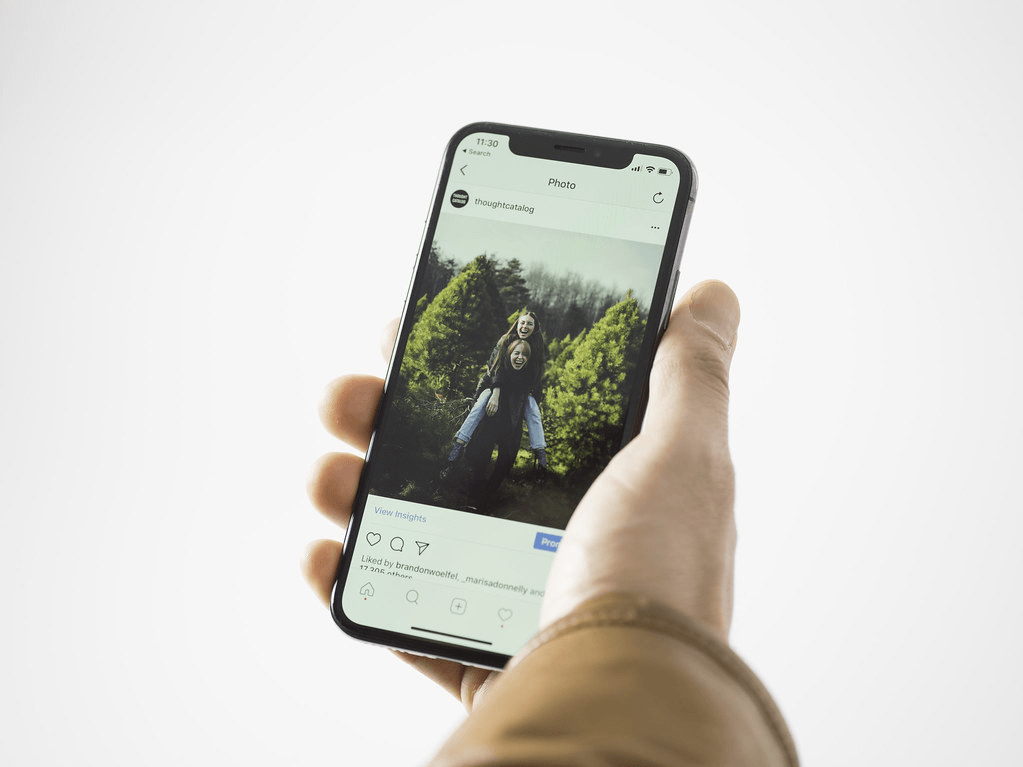
In a time where connecting with people online can be done while you’re sitting on the toilet, it is no wonder that people are becoming increasingly reliant on online relationships for the emotional support that they require. What does this mean for us? From my experience with social media and livestreams, I think that this increased dependency is resulting in a growing number of people who are both knowingly and unknowingly forming parasocial relationships with the celebrities and influencers that they follow. Before discussing parasocial relationships, we first have to define what a parasocial relationship is. A parasocial relationship is a one-sided relationship between a consumer and a media personality, where only the consumer thinks that there is an intimate connection, somewhat akin to friendship, between the two parties. How does such a relationship form? It first begins with parasocial interactions, which are events where the follower feels that the media personality is personally addressing them. Over time, the follower may feel closer to and more emotionally invested in the media personality, forming a parasocial relationship. As an example, I myself have been in a parasocial relationship. I frequently use Twitch, a platform where influencers can stream what they are doing live. Unlike traditional media, streamers can interact with their audience by reading what the audience types in chat in real-time and responding directly to those messages. In my opinion, this motivates people to type in the chat in the hope of interacting with the streamer, and that is what I did. After the streamer read and responded to my messages, I felt that I was acknowledged and that I had become closer to them. As a result of this, I would always be interested in the latest news about the streamer, from their latest accomplishments to whatever drama that they got themselves involved in. Do I feel that this pattern of behavior was unhealthy for me? Not really. I would only invest time into following this streamer when I was bored, and I do not think that it affected my daily life in any way or form. As such, this begs the question: are parasocial interactions and relationships (PIRs) inherently negative? From my browsing of modern discourse, PIRs are often viewed in a negative light, without any redeeming factors. In contrast, PIRs have been found to decrease loneliness and supplement people’s social needs (Jarzyna, 2021). This property of PIRs is especially useful in situations where it is hard to build connections and form genuine relationships, for example when most people were in lockdown due to the recent pandemic. It can also be beneficial for those with difficulties in developing genuine relationships. For these people, PIRs can serve to compensate for these internal social deficits. As such, PIRs can be beneficial to people, and are not inherently bad. However, there is a reason why PIRs are often viewed in a negative light. In some cases, PIRs can negatively affect the overall wellbeing of the people involved. For example, PIRs may develop into celebrity worship, where one becomes overly-obsessed with the personal details of the celebrity’s life, which can become an unhealthy addiction (McCutcheon et al., 2002). PIRs can also affect real-life relationships. In a study by Adam (2019), partners of those involved in PIRs were found to perceive PIRs as being hurtful. PIRs were seen as romantic betrayal, making the partner feel inadequate. This was especially so in committed relationships, where PIRs were seen as acts of infidelity. These findings suggest that PIRs have the potential to negatively affect people. One might argue that these downsides are not that severe. However, in my opinion, another downside of PIRs is that followers that have developed PIRs with media personalities can be easily taken advantage of by said media personalities. I have seen media personalities promising a chance for their followers to get closer to them, whether that be by giving them opportunities to privately contact them or get exclusive access to certain perks, in exchange for money or even working under them for free. Media personalities may even pretend to be poor or single to further prey on their followers’ parasocial tendencies. This can lead to situations where the personality is found to be lying, resulting in a lot of their followers feeling hurt, even potentially feeling like they are going through a break-up (Hu, 2016). To conclude, PIRs are not inherently bad. However, they do have the potential to negatively affect our overall well being. As such, it is better to recognize any potential PIRs that we may be developing. By becoming aware of our dependency on these personalities to fulfill our social needs, we can take steps to limit how they can affect us. References Derrick, J. L., Gabriel, S., & Tippin, B. (2008). Parasocial relationships and self‐discrepancies: Faux relationships have benefits for low self‐esteem individuals. Personal Relationships, 15(2), 261-280. Hu, M. (2016). The influence of a scandal on parasocial relationship, parasocial interaction, and parasocial breakup. Psychology of Popular Media Culture, 5(3), 217–231. Jarzyna, C. L. (2021). Parasocial interaction, the COVID-19 quarantine, and digital age media. Human Arenas, 4(3), 413-429. McCutcheon, L. E., Lange, R., & Houran, J. (2002). Conceptualization and measurement of celebrity worship. British Journal of Psychology, 93(1), 67–87.
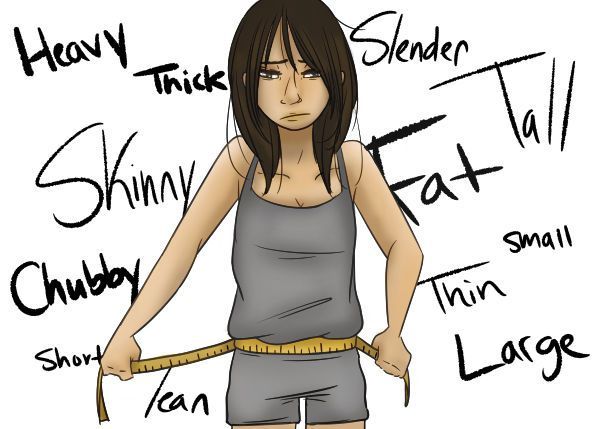
Have you ever scrolled through Instagram and come across your favourite celebrity's post and hear a voice in your head saying “I wish my body was like hers”, or “I wish I had that body”? If your answer is a YES, then believe me when I say you are not the only one. However, there are situations where the same celebrities we idolized are also being criticized by how they look. For example, when they look chubbier or there are visible scars on their body. I am sure many of us have come across comments on social media posts of these celebrities, some of which can be so offensive. These behaviors do not only happen on social media but it is also openly practiced in magazines, newspapers, television shows, movies, and conversations between friends. What is body shaming? The act of body shaming happens in multiple ways, such as when a person either criticizes their own appearance due to judgments made by others, or another type of body shaming would be by criticizing someone else’s appearance either in front of them, or behind their backs. Question is, why does 'body shaming' happen and what do we need to know about it? Body shaming happens when someone criticizes either directly or in public(eg:social media and magazines) on their body weight of either being “too fat” or “too skinny”. This act is also a form of bullying. This act, unfortunately, is not only faced by adults but also by children who are still schooling. It happens to both men and women of any shapes and sizes. Some may claim these criticisms are just “jokes” but little do they realize that these “jokes” can cause negative effects on the victims’ emotional and mental state. A few research has shown that body shaming increases eating problems. Body shaming causes an individual to eat more and put on extra weight. On the other hand, when someone is told continuously that he/she is fat, they might also start eating less due to the fear and stress of putting on more weight. Either way, the act of ‘body shaming’ causes unhealthy and negative effects on the individuals being targeted and so if they are not being properly addressed, this can also affect their long-term mental and physical well being. How does body shaming sound like? Zendaya During the 2015 Oscars, Zendaya was made fun of by Giuliana Rancic, a host from the Fashion Police show. Zendaya was commented on her locs, saying it made her look like she smelled like patchouli oil and weed. Zendaya in return posted a lengthy post in Instagram "Someone said something about my hair at the Oscars that left me in awe. Not because I was relishing in rave outfit reviews, but because I was hit with ignorant slurs and pure disrespect." Taylor Swift Taylor had once mentioned in her documentary that people created rumors about her being pregnant because of her tummy that stuck out a little. Swift admitted these comments triggered her to the point where she would starve a little.She also mentioned that its horrifying what the media has done to her. Selena Gomez Selena was photographed in a bikini by paparazzi’s and they went on and on in headlines about the weight she had gained. This took Selena aback as she has spoken about her chronic illness and how it affects her mental health, which is what contributes to her fluctuating weight. Rihanna In 2017, an article entitled 'Is Rihanna Going to Make Being Fat the Hot New Trend?' was written by a sports journalist. Tyra Banks Tyra, a top model, was once blasted for gaining weight in tabloids, with a picture of her in a bathing suit. Tyra shut paparazzi’s down by wearing the same bathing suit on her show and calling them out for always waiting to capture people's worst possible angles and making money out of it. What can be done about body-shaming? 1. Stop body shaming yourself People tend to have bad days, and everyone wishes to change something about themselves. It is important for each and everyone to accept themselves for what they look like, because in the end , all that matters is that he/she is healthy. Never condemn yourself on how you look. Sometimes, despite being confident about the way you look, there are people out there who are ever ready to pass unnecessary comments and judgements on how you look. In such situations, choose to walk away from the situation and continue to do things that make you feel good about yourself. 2. Don’t join in In certain situations, you may have encountered body shaming regularly, and might have been part of it without realizing it. It is best to avoid joining in such behaviors completely, no matter who the person is, be it friends or family. Instead, advise those who do it to stop, make them realize the consequences of body shaming comments, especially on social media. If you are to come across any social media post or comment that contributes to body shaming, do not hesitate to report it or even flag it for inappropriate content. 3.Celebrate what you have With the presence of social media, it is very easy for one to feel upset about how they look, be it their body shape, their facial features, etc. It is important to be thankful for what you have been gifted with and celebrate what you have. Wear anything that makes you feel good in your own skin. Remember, life isn’t about perfection. It's about feeling perfect even with your imperfections. So never be ashamed to embrace your imperfections. Find something that makes you YOU and celebrate it.

Russia’s recent invasion of Ukraine was an event that shocked the world. Many people have banded together online in a united effort to condemn the actions of Vladimir Putin and to stop this war. As part of this movement, people have been calling for companies to stop doing business in Russia. For example, an article in the Washington Examiner documents that #BoycottCocaCola was trending on Twitter in response to Coca-Cola’s continued operations in Russia (Kerr, 2022). However, with the sanctions from the EU and their removal from SWIFT, the provider of international financial transactions, Russia’s economy is already under a lot of pressure. In my opinion, stopping these companies from operating in Russia would make more of an impact on the everyday lives of its citizens than on stopping the war. As such, I see the call for many companies to stop doing business with Russia as a case of online discourse becoming more and more extreme as time passes. In social psychology, this would be classified as a case of group polarization, which is a phenomenon where the group members’ attitudes shift towards a more extreme point after interacting with each other. An example of this would be the experiment by Myers and Kaplan (1976), where participants were asked to be part of a mock jury. Participants first gave their judgments on eight cases before discussing half of those cases with the other subjects. After the discussions, they were found to be more extreme in their judgments, becoming more harsh when the case was highly incriminating and more lenient when the case was less incriminating. In my opinion, group polarization was not much of an issue before, as groups of like-minded people could not often meet up due to the constraints of time and distance. However, in the era of social media, it is extremely easy to meet and interact with like-minded people. In addition to that, people do not even need to be online at the same time as discourse can still occur by just leaving a comment or tweeting at one’s own convenience, leading to group polarization. For the reasons mentioned above, I think that social media is the perfect breeding ground for group polarization, and from my own experience this is a problem that has already manifested itself online. Take Twitter for example. The platform is filled with a countless number of groups that all have beef with each other due to being unable to find a middle ground because of the extreme stances that they all take. Some users have even begun to develop a mentality where you are either with us or against us, unable to see the world in anything other than black and white. One might argue that because of how easy it is to access information on the internet, people would have many opportunities to interact with different political perspectives online than they do offline. In theory, this should prevent the formation of echo chambers, environments where people are only exposed to perspectives that agree with their own, and prevent group polarization from occurring. However, in a study by Hong and Kim (2016), they found that the Twitter accounts of politicians with extreme political ideologies had more followers than their more moderate peers, suggesting that polarization does occur online. This may be due to confirmation bias, where people tend to look for evidence to substantiate their own beliefs. As such, I believe that people intentionally avoid exposing themselves to a wide range of opinions, instead forming echo chambers around themselves. From what I have seen, group polarization has negative effects. There is the risk of groupthink, which traditionally means that there is a higher chance of a group making more extreme and risky decisions. In an online setting, I feel that group members do not interact for the purpose of making decisions, but rather to know what each other is thinking to get a feel of the general consensus. As such, groupthink still occurs via members of the group not raising any concerns about the current discourse, for fear of being perceived as going against the group. As a result of this, the perceived group consensus may not actually be representative of what each member thinks. An experiment by Guilbeault et al. (2021) has shown how easily it is for a consensus to affect what individuals think the correct opinion to have is, and I think that groupthink affects individuals in a similar manner. As a consequence of this, I think that group members may share opinions online that they later regret (Neil, 2017). In addition to this, I feel that individuals who fall prey to group polarization are more likely to argue online, negatively affecting their mental health. I think that because they hold more extreme positions, it will be more likely for them to find people who disagree with them, and a little disagreement is often enough for an online squabble to begin. In a survey by Tait (2016), 35.8% of respondents said that online arguments affected their mental health. In addition to that, 2.6% of respondents felt the urge to harm themselves after engaging in online arguments and 11% responded that online arguments made their pre-existing mental health conditions worse. This hints at the notion that group polarization can be detrimental to one’s mental health. To avoid these consequences, how should group polarization be presented? An easy way to do so would be to avoid creating an echo chamber. Try exposing yourself to as many opinions as possible from a diverse range of credible people. Besides that, if a discussion is held, it may be good for people to take note of their standings before the discussion and for someone to play devil’s advocate during the discussion itself (Sockolov, 2017). I sincerely believe that any group that takes these steps will be at very little risk of polarization. References Guilbeault, D., Baronchelli, A., & Centola, D. (2021). Experimental evidence for scale-induced category convergence across populations. Nature Communications, 12(1), 1-7. Hong, S., & Kim, S. H. (2016). Political polarization on twitter: Implications for the use of social media in digital governments. Government Information Quarterly, 33(4), 777-782. Kerr, A. (2022, 5 March). Calls to boycott Coca-Cola grow after company refuses to pull out of Russia. Washington Examiner. https://www.washingtonexaminer.com/news/calls-to-boycott-coca-cola-grow-after-company-refuses-to-pull-out-of-russia Myers, D. G., & Kaplan, M. F. (1976). Group-induced polarization in simulated juries. Personality and Social Psychology Bulletin, 2(1), 63-66. Neil, S. P. (2017, 6 December). More Than Half of Americans Have Social Media Regrets. Huffpost. https://www.huffpost.com/entry/more-than-half-of-america_b_7872514 Sockolov, E. (2017, 7 September). How Group Polarization is Tearing us Apart. One Mind Therapy. https://onemindtherapy.com/social-psychology/group-polarization/ Tait, A. (2016, 7 October). Is arguing online actually good for your mental health? The New Statesman. https://www.newstatesman.com/science-tech/2016/10/arguing-online-actually-good-your-mental-health

Have you ever fallen for a lie? I certainly have, several times in real life, but even more times online. For example, when I was 10 years old, I was playing one of those mobile games with a premium currency that could be used to massively increase my progress. That premium currency could only be obtained with real money, and so I asked my parents if I could buy some and they said no. Thus began my journey to find a way to get this premium currency for free. What did I do? I went to YouTube and followed the link that the first video I saw recommended. This led to me giving away my mum’s phone number in the hopes of gaining what I wanted, but instead all I got was a scolding from my parents because my mum’s phone kept getting spam messages. So, what made 10-year-old me, and many other children, fall for online scams? Is it just because children are gullible? Research into psychology has revealed that it isn’t that children are gullible, but instead they do not consider that people may lie to them. In a study where pupils were taught how to differentiate real from fake information that they read online, they were found to still not evaluate the information that they were reading (Walraven, Brand-Gruwel & Boshuizen, 2009). So why does this happen? It is possible that children are unmotivated. Children are willing to accept claims if there are no conflicting sources. In an experiment by Vanderbilt, Heyman & Liu (2014), it was found that children were willing to trust an inaccurate source if no one spoke against that source. Additionally, children do not go out of their way to look for alternative sources (Walraven et al., 2009). To go back to my previous example, if I had looked at more than one YouTube video, I would have found that many people were trying to warn others about this scam. This suggests that children are unmotivated to look for and compare information from multiple websites or videos, instead accepting the first thing that they are exposed to. What if children knew they were being lied to? Would they act differently? In an experiment by Brassch et al. (2013), children that were told about the existence of false information were better at spotting false information than those who were not told so (Brassch et al., 2013). As such, it is important to educate children about the existence of online scams and fake information so that they know that they should look out for it. If I had known about this when I was younger, I think I would have been more careful and done a bit more research before clicking on random links on the Internet. However, as time progresses, the Internet will get harder for not only children, but also adults, to navigate. This is because misinformation and scams are being presented in a more professional manner, causing people to be more vulnerable to deception. In a study by Lorenzen (2001), high school students were made to use information from multiple sources. However, they were unable to detect which webpage contained false information. This was because the webpages were designed professionally, which was enough for a high school student to trust it. Take The Onion, for example. Due to its professional look, if people didn’t know that it was a satirical news website, they would probably think the news on the website was accurate. A similar phenomenon, known as the halo effect, has been heavily documented in psychology. Children have been found to prefer other attractive children as friends, believing that attractive children will treat them better (Dion, 1973). Additionally, attractive people are also viewed as more trustworthy (Wilson & Eckel, 2006). In my opinion, the reason why people trust websites that look professional might be the same as the reason why the halo effect exists. People tend to use mental shortcuts, for example lumping similar things into the same category or overgeneralizing to make everyday life easier to navigate. Due to this, I think that we make the assumption that because a website leaves a good impression, it should also be a website with trustworthy information. Therefore, it is important for both children and adults to not judge a website only by its looks, because by doing so might result in you getting scammed like 10-year-old me.
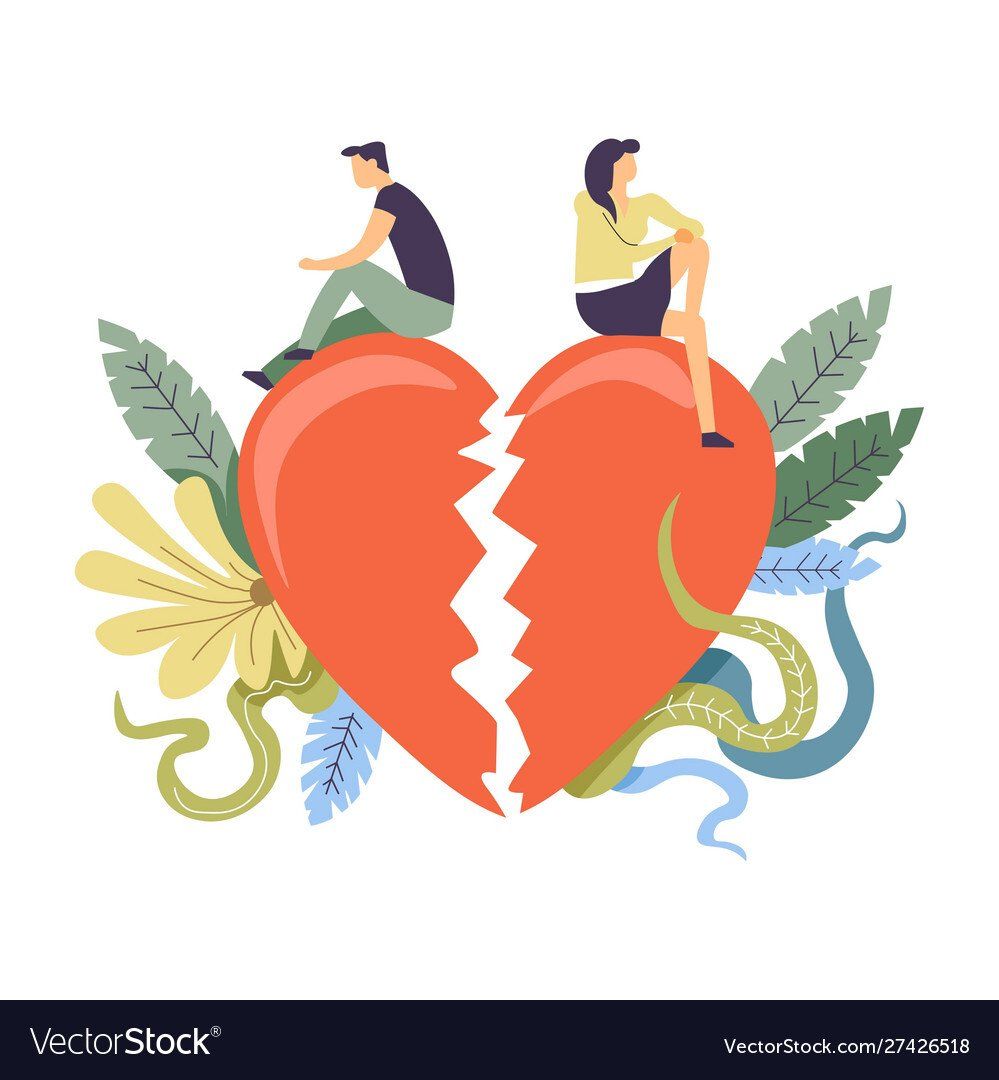
The word “break up” is commonly associated with either pain or freedom. It can also mean having your emotions all over the place. Breakup comes with heartbreak, it does for most people. Chances are, one might feel like it's the end of the world or even think there’s never going to be anyone else. It's going to be painful waking up knowing that things aren’t going to be the same anymore. The feeling of devastation and disappointment is real, and you might feel them all very deeply. Common feelings after a break up: Lonely Isolation Loss of appetite Heavy heart Constant crying Sadness Note: If the feelings and distress persist for longer than 2 weeks and it's affecting your functioning, please seek out professional mental health support. Remember, your feelings are valid. Feel it all, feel it all deeply. Grieve as long as you need. Let it all out because someday you are going to look back at those moments and smirk. You are going to get over it all, each and every one of it. At the moment it may feel like that's all there is to feel, but slowly and surely at some point, you will wake yourself out of it. Get out there, discover what makes you happy. This is the time for self love. There’s going to be changes in your routine and your lifestyle, but that's okay, changes can be good for one. What you can do to help yourself: Get a friend or family to talk to, or seek professional mental health support. Get yourself out of bed and do what you like. Find a hobby and do what you love. Prioritize yourself and your wellbeing. Pain is temporary. The never ending silent cries in the shower and at night in bed will stop. The intense pain in the chest will eventually stop too. The constant wondering of how to make it work or why the relationship didn’t work will come to an end. It may take weeks,months, maybe even years, but it will. Continue working on yourself, your happiness and your wellbeing. Happiness and joy may seem very distant, but that's temporary too. The journey will be full of ups and downs, but rest assured, it will be exciting. Remember, you are not alone. Everything happens for a reason, you may not see why at the moment, but eventually you will. There may be times where you randomly get memories from a song you are listening to, a movie, etc. and it might affect you but that's okay. It's normal to feel that way when coming across moments you truly cherish. Instead of letting it consume you, you can try to be thankful for the moment instead. Some may choose to avoid it all, the place, the song, the movie, but it's better to face something than to avoid it. Face your fears they say because, “Do the thing you fear to do and keep doing it, that's the quickest and surest way to ever yet discovered to conquer fear.”-Dale Carnegie



